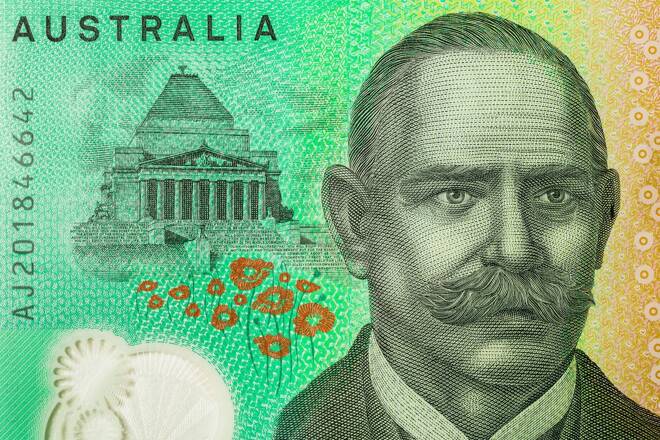Advertisement
Advertisement
AUD to USD Forecast: The RBA and Fed Speakers in the Spotlight
By:
The RBA remains in the spotlight, after the more hawkish-than-expected stance on interest rates. However, Fed speakers could move the AUD/USD.
Highlights
- The AUD/USD gained 0.62% on Tuesday, ending the session at $0.65231.
- A more hawkish-than-expected RBA stance on monetary policy delivered the gains.
- On Wednesday, the RBA Pack, China, and Fed speakers need consideration.
Tuesday Overview of the AUD/USD
The AUD/USD gained 0.62% on Tuesday. Reversing a 0.44% loss from Monday, the Australian dollar ended the session at $0.65231. The Australian dollar fell to a low of $0.64781 before rising to a high of $0.65250.
The RBA Remains Under the Spotlight
On Wednesday, the RBA remains under the spotlight. The RBA delivered a more hawkish-than-expected stance on monetary policy on Tuesday. Discussions about rate hikes supported an Aussie dollar return to the $0.65 handle.
Later this morning, the RBA Chart Pack warrants investor attention. The Chart Pack considers the financial markets, macroeconomic economic environment, and key trading partners.
On Tuesday, RBA Governor Michele Bullock noted the RBA factored weakness in the Chinese economy into its growth forecasts. The Chart Pack could provide more RBA insights about the economic outlook and the RBA rate path.
Earlier this morning, private sector data from Australia signaled a weakening industrial sector. The Ai Group Industry Index declined from -22.4 to -27.3 in January. Economists forecast a reading of -26.0. However, the numbers had a limited impact on the Aussie dollar.
The sector contributes less than 30% to the economy. On Tuesday, RBA Governor Bullock focused on the services sector, discussing the influence of service sector trends on inflation and growth.
US Economic Calendar: Trade Data and the Fed
On Wednesday, US trade data will draw investor interest. Economists forecast the trade deficit to narrow from $63.2 billion to $62.2 billion in December. Investors must also consider import and export numbers.
The US remains an important trading partner for advanced and developing economies. Improving trade terms could signal an improving global macroeconomic environment.
Nonetheless, the numbers will unlikely influence investor bets on a May Fed rate cut. The focus remains on the US labor market and consumption and inflation trends.
Beyond the numbers, investors must track FOMC member speeches throughout the session. FOMC voting members Adriana Kugler and Thomas Barkin are on the calendar to speak. Non-voting member Susan Collins will also deliver a speech on Wednesday. Reactions to the recent US Jobs Report and ISM Services PMI numbers and views on interest rates would move the dial.
Short-Term Forecast
Short-term trends in AUD/USD hinge on central bank commentary and China. Weakness in the Chinese economy and hawkish Fed speeches could tilt monetary policy divergence toward the US dollar.
AUD/USD Price Action
Daily Chart
The AUD/USD remained below the 50-day and 200-day EMAs, sending bearish price signals. Significantly, the 50-day EMA narrowed to the 200-day EMA. A bearish cross would confirm the bearish near-term price trend.
An AUD/USD return to the $0.65500 handle would support a move to the EMAs and $0.66162 resistance level.
The RBA, China, and the Fed need consideration on Wednesday.
However, a break below the $0.64900 support level would give the bears a run at the trend line.
A 14-period Daily RSI reading of 39.39 suggests an AUD/USD drop below the $0.64900 support level before entering oversold territory.
4-Hourly Chart
The AUD/USD sat below the 50-day and 200-day EMAs, affirming the bearish price signals.
An AUD/USD break above the 50-day EMA would support a move toward the 200-day EMA and the $0.66162 resistance level.
However, a fall through the $0.64900 support level would give the bears a run at the trend line.
The 14-period 4-Hourly RSI at 49.23 suggests an AUD/USD break below the trend line before entering oversold territory.
About the Author
Bob Masonauthor
With over 28 years of experience in the financial industry, Bob has worked with various global rating agencies and multinational banks. Currently he is covering currencies, commodities, alternative asset classes and global equities, focusing mostly on European and Asian markets.
Advertisement
